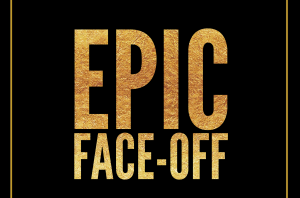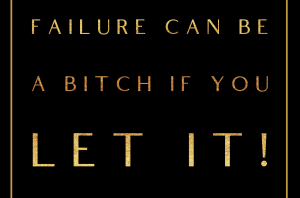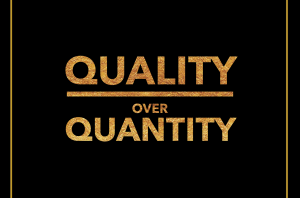
Bobbi Brown became a name in the cosmetics business by pushing moderation. In the 1980s, when look-at-me colors, stark contours, and shiny red lips were in fashion, Brown designed cosmetics to highlight a woman’s natural look. She had moved to New York City in 1980 with a degree in theatrical makeup and a beginner’s portfolio. Before the decade was done, she’d hustled her way from freelance makeup artist at magazine shoots to product designer with her name behind a global brand. In 1995, Estée Lauder (NYSE:EL) bought Bobbi Brown Cosmetics (the sale price wasn’t disclosed, but Lauder reported that the $74.5 million it invested that year was principally on the acquisition), and Brown stayed in an active role. After some setbacks, the brand is thriving again. Now 50, Brown recently opened the first freestanding Bobbi Brown retail store, with a makeup artistry school in the back, and is at work on her fifth book.
Being five feet tall, the teeniest of all my friends, made me a little more self-conscious and insecure about the way I look. Makeup was something I could do to make myself look prettier. Like any little girl, my makeup style is the opposite of my mother’s. Her’s was very ’60s, sexy, Twiggy, mod. Mine was very Ali MacGraw in Love Story.
I was never directed in school. Nothing really got my attention. After six months at the University of Wisconsin and a year at the University of Arizona, I came back and I told my mom I wanted to drop out. She said, “Pretend today is your birthday and you could do anything you want.” I thought, and I said, “I would love to go to Marshall Field’s and play with makeup.” She said, “I’m sure somewhere there’s a college where you could study theatrical makeup.” A friend of my dad’s told me about Emerson College in Boston. I always say that when I found Emerson, I found myself.
I moved to New York in 1980, a year after I graduated. One of the best things I had going for me was that I was so naive. I never even thought of not being able to do it. Once I unpacked, I looked up makeup in the phone book. Photographers. Modeling agencies. I had a pretty amateurish portfolio of my makeup work from college–which I can’t believe I had the guts to show people. Half of the models were myself.
Makeup was really extreme in the ’80s–white skin and red lips and contouring. I loved more of the healthy, natural, simple skin. I really think I helped the natural revolution.
Around 1988, I was doing a shoot for Mademoiselle. We went to all of these hip downtown places, and one of them was Kiehl’s pharmacy, where I met a chemist. I told him I just hated most of the lipsticks on the market. I wanted it to be creamy and not dry, to stay on a long time, to not have any odor at all, and to be colors that look like lips. He said, “I’ll make it for you.” I mixed a taupe eye pencil, a blush–there was not a lipstick in there–and I sent the swatch to him. “Brown” is currently in my line and my No. 1 selling lipstick. And that’s how we started.
Research didn’t interest me. I wanted the texture, the color, and the smell. I thought, “Wow. If I could make a collection of 10 colors, I can’t imagine a woman needing any other color.” No fuchsia or acid orange, but wearable colors that don’t look like they scream when a woman walks into a room.
The beauty editor of Glamour magazine wrote maybe three lines about this thing I was doing, with my phone number. We got bombarded with orders. I guess that’s when I needed to get serious and get a partner. Rosalind Landis had hired me a year before, at her PR firm, to talk about how you could use eye shadows. We went out to dinner one night–Roz, her husband, Ken, who was in the cosmetics industry, and my husband, who is a business attorney. It turns out Ken’s family had moved to Florida and bought this house. The weirdest thing: They bought it from my mother. We started the company together with $10,000.
I was at a dinner party and I said to this woman, “What do you do?” She said, “I’m the cosmetics buyer at Bergdorf Goodman.” I told her about my lipsticks and she said, “We have to take them.” Later they said they couldn’t take us. They had too much going on that season. I remember my stomach dropping when I got the message. I was at a photo shoot for Saks and telling the creative directors and art directors about this new line, and they said, “Oh, my God. We want it.” I called Bergdorf back and said, “That’s too bad, but don’t worry, because Saks wants it.” Bergdorf called me back 10 minutes later and said, “Uh-uh. We’re going to take it.” I never even went to the right people at Saks. Now I know, that’s called bluffing.
Customers started coming. People said, “You have to do lip pencils. You have to do blush.” Magazines were asking me to do shoots where I was actually photographed. I was even being quoted about other things. They started treating makeup artists as celebrities.
Before Lauder came knocking we had two big offers we turned down. When Lauder bought M.A.C. in 1994, I was bummed. Then Frederic Fekkai said Leonard Lauder wanted to meet me. We sat on Leonard’s deck overlooking Central Park. He said, “We want to buy you because you are beating us in all the stores, and what you’ve done is amazing, and you remind me of my mother when she started.” He loves an entrepreneur.
I sold the company because Leonard said, “I want you to keep doing what you’re doing.” He has never moved from that position. At the same time, Roz and I were always 50-50, and it was a struggle. It was a successful relationship, but we butted heads regularly. Lauder brought her in corporately to help work on new acquisitions. And then eventually she left the company.
At Estée Lauder, our business was flat for a while.Things we were doing were being knocked off. They would call knockoffs “Essentially Brown” instead of “Bobbi Brown Essentials.” I had lunch with the CEO, Fred Langhammer, who basically said, “There’s a problem because you are not setting yourself apart. Blah, blah, blah.” I said, “You want to know what I would do? First of all, move out of the GM Building. Move downtown into a cool loft. Put in my head of marketing, Maureen Case, as president. And completely open, change the culture.” So we moved to SoHo.
Our products became a little more fun and fresh.Our advertising photographs were more editorial, like we were working for a magazine. A regular brand would never do an advertisement with smashed lipsticks. Now you see it all the time. We were one of the first brands to regularly use black models and show them as brides.
Once we moved downtown, the numbers started vastly improving. We hit half a billion at the end of 2006. For a kid that never got better than a D in math! How did this happen?
My favorite aunt thinks it’s really funny that I’ve become a hero to women, and all I do is tell them to take blush and smear it on their cheeks. She says, “I could have told people that.”
By Bobbi Brown






